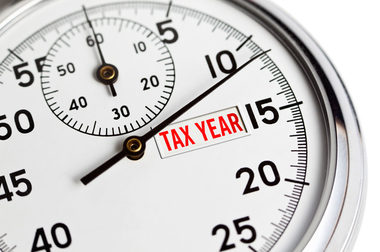What Exactly Is a “Tax Year”? A tax year is an annual accounting period for keeping records and reporting income and expenses.
Types of Tax Year
- Calendar year — 12 consecutive months, beginning January 1 and ending December 31.
- Fiscal year — 12 consecutive months ending on the last day of the month except in December. A 52-53-week tax year is a fiscal tax year that varies from 52 to 53 weeks but doesn’t have to end on the last day of the month.
You can adopt either type of tax year unless you have a required tax year. A required tax year is a tax year required under the Internal Revenue Code and the Income Tax Regulations. However, if there are no requirements for your organization, then you need only file your first income tax return using the tax year you adopt. Once you have done this, you have made it clear to the IRS that that’s the tax year you’re using.
But you haven’t adopted a tax year if you merely did any of the following:
- Filed an application for an extension of time to file an income tax return.
- Filed an application for an employer identification number.
- Paid estimated taxes for that tax year.
If you file your first tax return using the calendar tax year and later begin business as a sole proprietor, become a partner in a partnership, or become a shareholder in an S corporation, you must continue to use the calendar year. You may switch only if you get IRS approval to do so or you meet one of the exceptions listed in the instructions to Form 1128, Application to Adopt, Change or Retain a Tax Year.
Calendar Year
Generally, anyone may adopt the calendar year. However, if any of the following apply, you must adopt the calendar year:
- You keep no books or records.
- You have no annual accounting period.
- Your present tax year doesn’t qualify as a fiscal year.
- You’re required to use a calendar year by a provision of the Internal Revenue Code or the Income Tax Regulations.
A short tax year — a year of less than 12 months — may require you to file a short period tax return when you, as a taxable entity:
- Aren’t in existence for an entire tax year, or
- Change your accounting period.
Tax on a short period tax return is figured differently for each situation.
Even if your taxable entity wasn’t in existence for the entire year, a tax return is required for the time it was in existence. Requirements for filing the return and figuring the tax are generally the same as the requirements for a return for a full 12-month tax year ending on the last day of the short tax year. For more information, see Publication 538, Accounting Periods and Methods or contact us. What Exactly Is a “Tax Year”? Hopefully this helped explain it!
For this and other key business tax decisions, consult with a qualified professional to make sure you do what’s best for your business — while remaining compliant with the complex rules.





